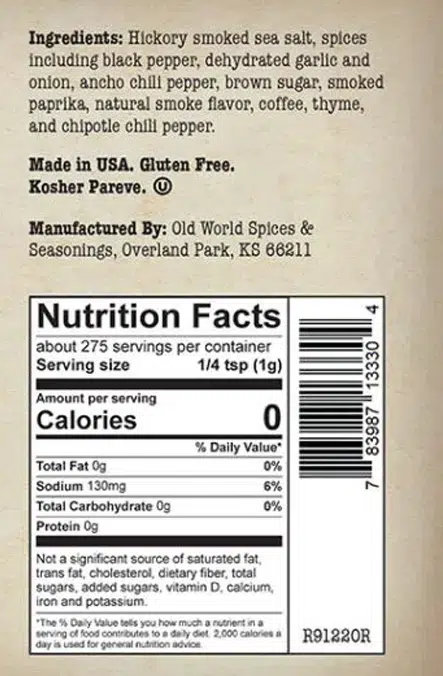Tired of bland food from your slow cooker? A little know-how goes a long way.
“Set it and forget it.” “It cooks all day while the cook’s away.” Marketing slogans like these promise foolproof cooking in a slow cooker. But no technique benefits from complete neglect. If you just throw everything in the crock, turn it on and walk away, you’re likely to get soggy, bland results. A little bit of effort can give you much more delicious food. Good cooking in a slow cooker is a matter of maximizing the cooker’s strengths and minimizing its weaknesses.
How do slow cookers work?
Slowly. Electric coils in the outer pot gradually transfer heat to the inner crock, which retains heat extremely well, maintaining a consistent temperature with minimal energy use (200-300 watts of electricity per hour). The heavy lid creates a tight seal, trapping heat and moisture that are critical to the slow-cooking process. Slow cookers are essentially closed systems; they produce little to no evaporation. Steam rising from the food condenses back into water on the inside of the lid and drips back onto the food. That constant drip keeps the food nice and moist. That’s also why slow-cooker recipes call for barely any liquid – about 2 tablespoons per serving for a sauce, 1/4 cup (60 ml) for stews, and 1/2 cup (120 ml) for soups (including the liquid from ingredients like canned tomatoes). The advantage of this closed system’s steam-condensation cycle is that it turns cheap cuts of meat and dense vegetables into delicious meals. The tough connective tissue in beef briskets and pork shoulders softens into delicious gelatin, similar to way it does in the low and slow environment of a smoker. And when making stews, you don’t need to stir because stoneware distributes heat so gradually and evenly.
What are the best kinds of foods to cook in a slow cooker?
Go for tough meats and fibrous vegetables. The relatively low heat of a slow cooker, 200-300°F (93-149°C), allows enzymes in meat to remain active for a long time, tenderizing the meat. Combined with time and moisture, the enzymes help turn collagen (tough connective tissue) into soft, rich-tasting gelatin. Tough beef chuck, brisket, short ribs, shanks, tri-tips, and flank steak become fall-apart tender after long, slow cooking. Hard, fibrous root vegetables like beets, carrots, and sweet potatoes are even more foolproof. They turn sweet and creamy in the crucible of a slow cooker. Soft and very moist vegetables like spinach and zucchini, and even fish, can be slow cooked, but they should be added only in the last few minutes.
One of the most surprising strengths of slow cookers is their ability to bake moist cakes like fruitcake or cheesecake more effectively than an oven. Heat radiates from the walls of a slow cooker similar to that of an oven. But slow cookers retain moisture better. The dry heat of an oven can brown the exterior of a moist cake and overcook or crack the surface. The superior moisture-retention of a slow cooker eliminates this problem. Just lay a folded kitchen towel over the crock under the lid to keep water from dripping back onto the cake.
Up your game: Join our Pitmaster Club. Try it out for free for 30 days. No credit card is needed. No spam. Join now and Be Amazing!
What are the challenges of a slow cooker?
Browning is the biggest challenge. Most slow cookers don’t sear or brown food, which is one of the main ways to make food—especially meat—delicious. While it might seem convenient to dump everything in a slow cooker and walk away, you get far better results by browning meats and vegetables in a skillet beforehand. Browning requires relatively high heat and begins to occur around 250°F (121°C), creating incredible new flavor compounds that are not present prior to browning. Some modern multi-cookers, such as the InstaPot, allow you to brown and slow cook in the same vessel, but the browning is never as deep or as flavorful as browning in a hot skillet such as cast iron. Either way, browning off ingredients insures that they are hot and food-safe before they go into the cooker. Most harmful bacteria grow between 40°F (refrigerator temperature) and 140°F (60°C) (very hot tap water temperature). Browning kills almost all surface bacteria, and extended cooking times take care of the rest. To keep harmful bacteria from growing in a slow cooker, frozen food should never be put directly into the cooker. Defrost and brown it first. Nor should you reheat pre-cooked food in a slow cooker because the cooker’s low heat gives too much time for bacteria to grow before reaching a food-safe temperature of 160°F (71°C).
Slow Cooker Do’s and Don’ts
DO brown food, especially meat, separately in a hot pan to create flavor. You can buy a “brown and braise” slow cooker or a multi-cooker, but you sacrifice the superior heat retention properties of thick stoneware.
DO fill the cooker at least half full and no more than two-thirds full to avoid overcooked or undercooked food and to prevent spills.
DO cut dense vegetables like potatoes and carrots into even-size pieces so they cook at a similar rate.
DO add tender vegetables, seafood, pasta, dairy products and fresh herbs toward the end of cooking to avoid mushiness and curdling.
DO use wooden, plastic or rubber utensils when stirring or serving and soft sponges when cleaning to avoid scratching the crock.
DON’T put frozen food in a slow cooker.
DON’T add too much liquid. Remember: evaporation concentrates flavors, but little to no evaporation occurs in a slow cooker. Use only small amounts of flavorful liquids like broth, wine, vegetable juice or fruit juice.
DON’T lift the lid during cooking. Every time you do, you lose heat and moisture, which disrupts the cooker’s steam-condensation cycle and extends cooking time.
DON’T store food in the slow cooker. Transfer it to another container for refrigerating or freezing to avoid sudden changes in temperature (which could crack the crock) and to ensure food safety.
DON’T reheat food in a slow cooker. Instead, reheat food in a microwave oven or on the stovetop.
Slow Cooker Temps
Slow cookers usually have three settings. Depending on the manufacturer, here’s what they mean, more or less:
Low. Approximately 200°F
Medium. Approximately 250°F
High. Approximately 300°F
The problem is that if there is a lot of liquid in the crock, then the water temp will rise to 212°F and stay there no matter what temp you have on the dial.
Be Sure To Boil Red Kidney Beans
A slow cooker is super convenient for long-cooking foods like dried beans. Just add liquids and beans and let it cook on low while you’re away. However, red kidney beans need to be boiled first to prevent them from making you sick.
According to the U.S. Food & Drug Administration (FDA), red kidney beans contain high levels of a toxin called phytohaemagglutinin (PHA) that could lead to nausea, vomiting, and abdominal pain. To destroy the toxin, the FDA recommends soaking raw dried red kidney beans, draining the soaking water, then boiling the beans in fresh water for at least 10 minutes. After that, they are safe to cook on low in a slow cooker. Note: this advice applies only to dried red kidney beans. Other varieties of dried beans are safe. Canned red kidney beans are also safe because they have been heated long enough to destroy the toxin during the canning process.
This article originally appeared in Fine Cooking magazine, issue #115. Republished with permission from David Joachim and Andrew Schloss.






High quality websites are expensive to run. If you help us, we’ll pay you back bigtime with an ad-free experience and a lot of freebies!
Millions come to AmazingRibs.com every month for high quality tested recipes, tips on technique, science, mythbusting, product reviews, and inspiration. But it is expensive to run a website with more than 2,000 pages and we don’t have a big corporate partner to subsidize us.
Our most important source of sustenance is people who join our Pitmaster Club. But please don’t think of it as a donation. Members get MANY great benefits. We block all third-party ads, we give members free ebooks, magazines, interviews, webinars, more recipes, a monthly sweepstakes with prizes worth up to $2,000, discounts on products, and best of all a community of like-minded cooks free of flame wars. Click below to see all the benefits, take a free 30 day trial, and help keep this site alive.
Post comments and questions below
1) Please try the search box at the top of every page before you ask for help.
2) Try to post your question to the appropriate page.
3) Tell us everything we need to know to help such as the type of cooker and thermometer. Dial thermometers are often off by as much as 50°F so if you are not using a good digital thermometer we probably can’t help you with time and temp questions. Please read this article about thermometers.
4) If you are a member of the Pitmaster Club, your comments login is probably different.
5) Posts with links in them may not appear immediately.
Moderators